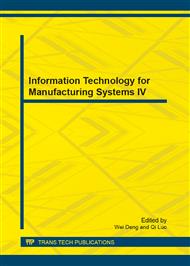[1]
Alam, M.S., Kabir, E., Rahman, M.M., Chowdhury, M.A. K , Power Sector Reform in Bangladesh: Electricity Distribution System. Energy, Vol. 29 (2004), p.1773 – 1783.
DOI: 10.1016/j.energy.2004.03.005
Google Scholar
[2]
Haque, M.A., Rahman, Jalalur, Power Crisis and Solution in Bangladesh. Bangladesh Journal of Scientific and Industrial Research, Vol. 52, no. 2 (2010), p.155 – 162.
DOI: 10.3329/bjsir.v45i2.5714
Google Scholar
[3]
Hossain, A.K., Badr O., Prospects of Renewable Energy Utilization for Electricity Generation in Bangladesh. Renewable and Sustainable Energy Reviews, Vol. 11 (2007), p.1617 – 1649.
DOI: 10.1016/j.rser.2005.12.010
Google Scholar
[4]
Islam, M. Rofiqul., Islam, M. Rabiul., Beg, M. Rafiqul Alam., Renewable Energy Resources and Technologies Practice in Bangladesh. Renewable and Sustainable Energy Reviews, Vol. 12 (2008), p.299 – 243.
DOI: 10.1016/j.rser.2006.07.003
Google Scholar
[5]
Dixit, S., Wagle, S., Sant, Girish., The Real Challenge in Power Sector Restructuring: Instilling Public Control through Transparency, Accountability and Public participation (TAP). Energy for Sustainable Development, Vol. 5, no. 3 (2001).
DOI: 10.1016/s0973-0826(08)60279-3
Google Scholar
[6]
Ordoobadi, Sharon M., Mulvaney, Nancy, J., Development of a Justification tool for Advanced Manufacturing Technologies: System-Wide Benefits Value Analysis. Journal of Engineering and Technology Management, Vol. 18 (2001), 157 – 184.
DOI: 10.1016/s0923-4748(01)00033-9
Google Scholar
[7]
Rajib, S.U., Alam, S., Sajib, Q.U., & Ahmed, N., Impact of Relationship among the Fundamental Blocks in Production Process to implement Re-Engineering: An Empirical Analysis in SMEs. Advanced Materials Research, Vol. 228 (2011), p.696 – 701.
DOI: 10.4028/www.scientific.net/amr.228-229.696
Google Scholar
[8]
Alam, S., Rajib, S.U., & Arefin, M., Critical Success Factors of Re-Engineering in the Production Process: SMEs Sector of Bangladesh. Applied Mechanics and Materials, Vol. 44 (2011), p.804 – 808.
DOI: 10.4028/www.scientific.net/amm.44-47.804
Google Scholar
[9]
Fan, L., Rajib, M., Uddin, S., & Alam, M., Business Process Re-engineering in the SMEs: Critical Success Factors Perspective of an Emerging Economy. International Journal of Contemporary Business Studies, Vol. 3, no. 7 (2012), p.6 – 18.
Google Scholar


